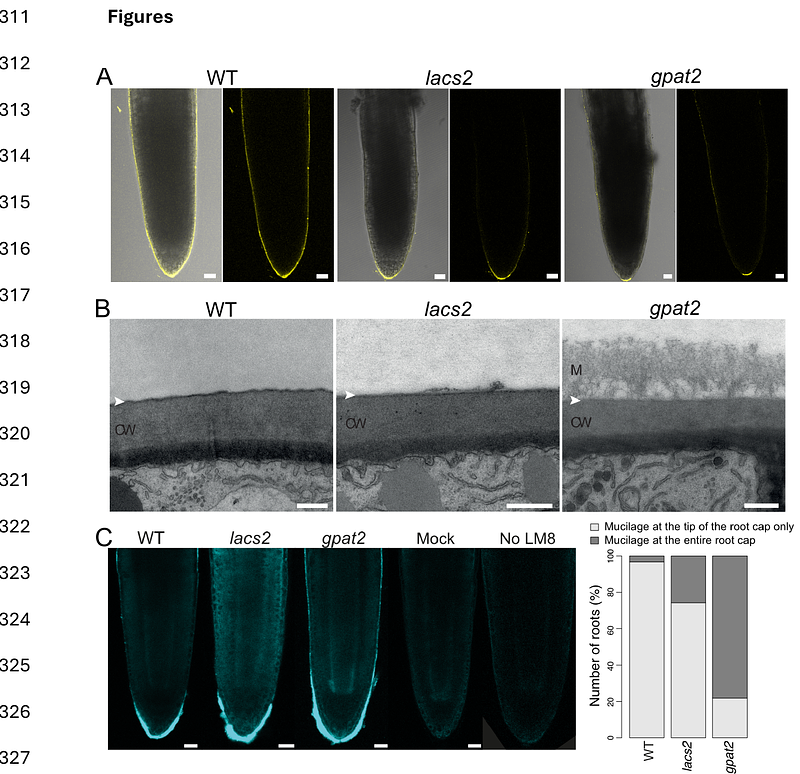GPAT2 plays a role in the root cap cuticle formation of Arabidopsis that is not redundant to GPAT4 and GPAT8

GPAT2 plays a role in the root cap cuticle formation of Arabidopsis that is not redundant to GPAT4 and GPAT8
Berhin, A.; Guerault, A.; De Bellis, D.; Nawrath, C.
AbstractDuring the first days after germination, the root cap protects the seeding with its cuticle, which persists until the embryonic outer root cap cell layer is shed. The polyester constituting the delicate Arabidopsis root cap cuticle of the primary root has an atypical composition, containing unsubstituted very-long-chain fatty acids in addition to the oxygenated fatty acids typically found in cutin. The sn2-glycerol-3-phosphate acyltransferases GPAT4 and GPAT8, which possess an active phosphatase domain, synthesize monoacylglycerols and are crucial for incorporating oxygenated fatty acids into the root cap cutin. Here, we show that the incorporation of very-long-chain fatty acids into cutin requires the glycerol-3-phosphate acyltransferase GPAT2, which lacks an active phosphatase domain and produces lysophosphatidic acids. The GPAT2 knockout alters the properties of the root cap leading to increased mucilage deposition but lower barrier properties. Furthermore, we demonstrate that the long-chain CoA synthetase LACS2 is required solely for the incorporation of oxygenated fatty acids into cutin, similar to GPAT4 and GPAT8. Consequently, two largely non-redundant pathways contribute to root cap cuticle formation in the primary root: both the LACS2/GPAT4/GPAT8- and the GPAT2-dependent pathways contribute non-redundantly to its barrier and surface properties. LACS2 also plays an important role in the formation of the root cap cuticle in emerging lateral roots, whereas GPAT2 has a minor function in this process. These findings underscore the diverse mechanisms by which cuticle synthesis is fine-tuned across plant organs and developmental stages to achieve specialized barrier and surface properties.